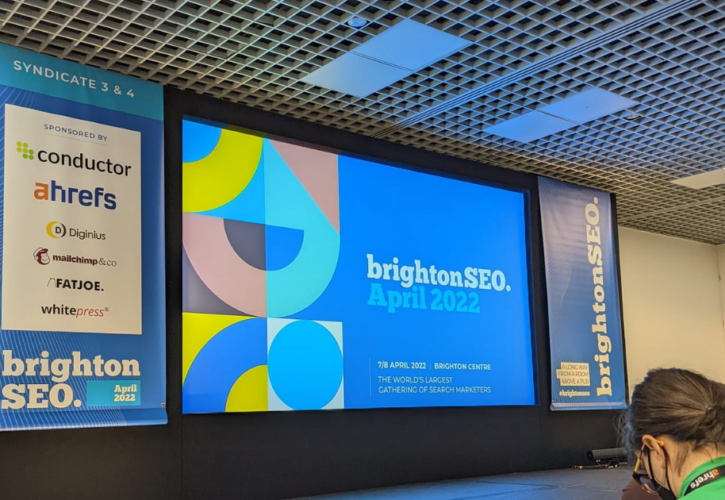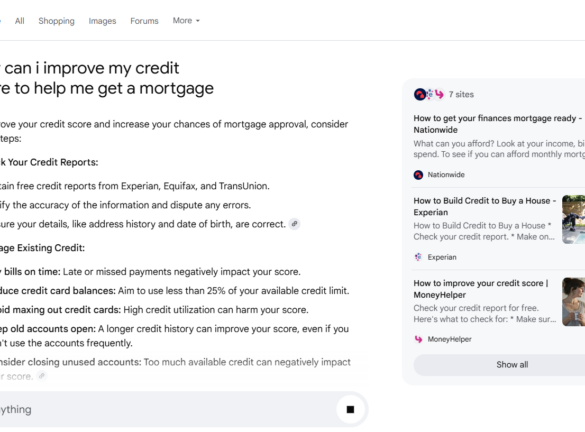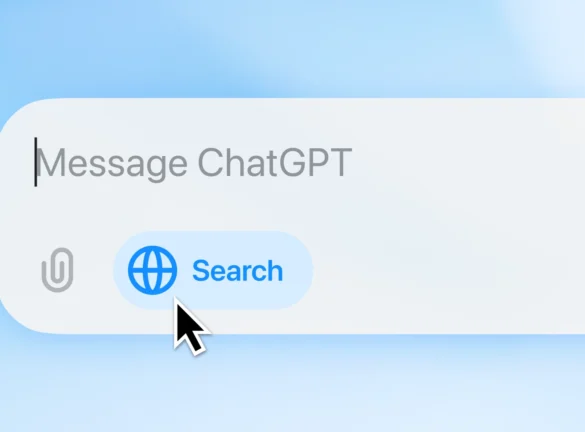
Brighton SEO 2022: Our Key Takeaways
While April’s BrightonSEO is over, the ideas and knowledge incited by insightful talks keep coming. Here you can find the notes shared by our team at ROAST following the 2-day event covering a few of the inspiring talks!
Freddy Krueger’s Guide of Scary Good Reporting, Greg Gifford
Greg focussed on questioning whether your client reporting brings value to your clients by providing actionable insights and not just monitoring metrics that the client can check themselves.
- Tracking the wrong metrics? Overloading with detail? Pointless information? Not connecting with business goals?
- Share understanding of website and marketing (services).
- Monitoring is not reporting- internal metrics don’t necessarily matter to the client. Details can confuse clients rather than help them.
- Clients have access to Google Analytics- why give them the same info twice.
- Clients inherently do not trust SEO and see it as smoke and mirrors.
- The best reports tell a story using data. They need an interpretation of what is going on.
- Speak in layman’s terms.
- Customise data studio reports to speak to the client’s objective and tie everything into the bottom line.
- Make it clear that the SEO efforts are leading to an increase in sales. Is organic traffic increasing and are we seeing an increase in leads?
- Important metrics on the first page, and additional information on the later pages.
- More organic traffic and leads do not always mean you’re winning. It should be qualified leads.
- SEOs rarely connect increased traffic and leads to sales data.
- Bounce rate is not an important metric – It won’t exist in GA4.
- Average session duration is not a reliable metric- it can be an oxymoron metric.
- Automate reports to save time. Label report elements with questions rather than jargon. Let the data tell a better story.
- Add baselines to tell a story with a graph.
View Greg’s slides here.
How to do Comprehensive Research for your Topic Cluster, Chima Mmeje
It is important to focus on the topic and not just keywords. The keywords will come after you become the source for the topic.
Research process
1. Choose the topic you want to build authority on. The first cluster should be what people think of when they hear your brand.
2. Figure out who you’re targeting, and who is looking for information on that topic?
3. Conduct a content audit – only look at what directly relates to that topic, what do you keep? What do you combine? What do you trash?
4. Turn to your Audience – what are they gaining from you? How are you helping them?
5. Keyword research – keyword gaps, topic researching, trending topics (tie to keywords), question-based keywords.
6. Go to social media and see what industry people say about that topic – popular hashtags, common questions/arguments. You want to take a position!
7. Create content for all the problems your product solves.
8. Which keywords are actually relevant to your topic, which keywords allow you to cast a wider net with your targeting?
9. Think about how you can capture users at each stage of the customer journey:
- Top of the funnel – don’t use transactional CTAs for this.
- Middle of the funnel – webinars and video testimonials, product pages for specific audience types.
- Bottom of the funnel – keywords around free items if it’s a product-based system, competitor alternative landing pages, special offers and promos, pricing pages. Avoid blog content.
- Post-purchase journey – use post-purchase content to take care of customers, build brand loyalty and upsell – go beyond sales, how else can you help them?
View Chima’s slides here.
How to go after Long-Tail Keywords, Paola Didone
What are long-tail keywords?
- Long-tail keywords are low search volume keywords with at least 3 keywords.
- 92% of long-tail keywords have 10 or fewer monthly searches.
Where to target?
- Think about the pages you already have.
- Use facet pages to target long-tail keywords for e-commerce.
- Category pages with FAQs are good for long-tail keywords.
- Targeted facet pages also help.
Rules for targeting long-tail keywords:
- What is already appearing for a long-tail keyword search?
- What is the lowest search volume to go after? What is the value of the conversion, and is it worth building the page?
How to research?
- Start with the head term and filter by low search volume keywords.
- Answer the Public is great for questions.
- Check competing pages, always check what’s ranking.
Important to avoid cannibalisation with the following methods:
- Use keyword mapping to make sure the right page is ranking and you’re explicitly targeting that keyword.
- Regularly update your keyword mapping with changes implemented.
View Paola’s slides here.
How to not be a Cannibal- How to Avoid Keyword Cannibalization, Limor Barenholtz
Keyword cannibalisation is when several different pages are competing for the same keywords with similar content. This turns pages into competitors and harms rankings and traffic because Google could choose the wrong page to rank.
- Clarity is key – be clear to users and search engines about where your content should lie.
- How to identify keyword cannibalization: monitor ranking performance if target phrases are fluctuating in the SERP.
- Check GSC to see how many pages are ranking for the same terms.
- Use site: + ’target phrase’.
- Keep a detailed map of URLs to keywords. (E.g. keyword mapping to identify keyword overlaps).
- Monitor organic traffic share- when does paid and organic fluctuate on key phrases? Does CTR drop in correlation with changes to PPC campaigns?
- How can I fix keyword cannibalization: mapping- isolate the duplications within the map. Adjust the SEO map so every URL has unique match phrases. Use keyword generators to find relevant terms.
- Roll out new keywords onto the conflicting pages.
- One clear authoritative page can rank higher than two split signal results.
- Align the internal linking structure in your site. When changing the focus of pages, make sure to update the internal linking.
- Align outreach activity to the new mapping structure. (E.g. anchor text).
- Align paid activity with organic efforts. Test the joint CTR.
- How to avoid keyword cannibalization: Format the SEO map to identify any duplicates.
- Focus on topic clusters rather than individual keywords.
- Regularly audit your content: tools to highlight the duplicate keywords.
- Block user generated content: content rel=ugc, rel=nofollow.
View Limor’s slides here.
Master Crawl Budget for Enterprise Sites, Manick Bhan
- What is Crawl Budget? The amount of time and pages Google is going to crawl on your site.
- There are 300M+ registered domains on the internet and over 130T pages!
- Crawl demand: how popular your pages are.
- High OT + Ranking KWs = High Crawl Demand
- Crawl Rate: the speed at which Google is crawling your site.
- Technical issues will negatively affect your crawl rate.
- You can’t force Google to crawl your site, but you can induce it. Not every site should worry about crawl budget, only if you have more than 1K pages.
- Enterprise-level and eCommerce sites should also focus on crawl budget.
- About 50% of product pages on eCommerce sites don’t even get crawled.
- Sitemaps are great for ensuring the pages you want to get crawled.
- Step 1: Identity which pages Google is actually crawling.
- Step 2: Pruning- eliminate low-quality pages, fix tech errors, used robots tag or 301.
- Step 3: Adjust your sitemap and remove low-value pages.
- How can you increase your crawl budget?
- By increasing authority, reclaiming lost backlinks, redirecting broken backlinks and acquiring new backlinks.
How to Create Genuinely Compelling Content for your Customers, Corrie Jones
- Create content based on psychology – you need to know what customers want to see.
- Demographics and psychographics.
- Demographics: age, gender, job, location, income, relationship status, education.
- Psychographics: attitudes, aspirations, likes and dislikes, hopes, dreams, strong opinions.
- How to track success?
- Data: vanity metrics – likes, shares and comments are important. You need to look at these in tandem with actionable metrics that convert content into traffic.
- Is the content appropriate for the platform or just reused from other platforms?
- Listen and provide style content. See what users already post and repackage it for them.
View Corrie’s slides here.
The Hidden Power of the SERP, Jon Earnshaw
- Jon talked about the importance of looking at the SERP, not just keywords and volume. This is especially important as the SERP can drastically change with each update and provide different content.
- Creating content to connect with the audience. Audiences search for the content with intent, Google analyses the intent and ranks pages in response to it, while businesses try to understand how this works.
- The SERP reflects intent. Think of the landscape, keywords aren’t a reflection of intent.
- The presentation used one search one year apart as an example of changing SERP. One year apart, all YouTube videos from the search ‘best beauty product’ disappeared from the SERP because the product review update changed everything. Video then came back in February 2022 bigger than ever.
View Jon’s slides here.
Interested in learning more about SEO? Reach out to our team via [email protected]
Or if you need a refresher on SERP Features then you can check our detailed Glossary here.





